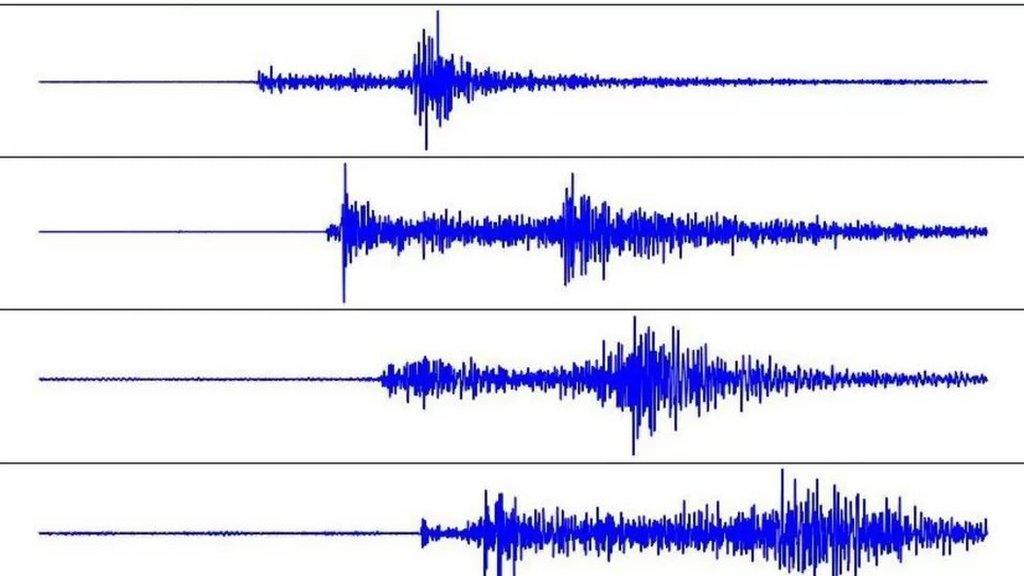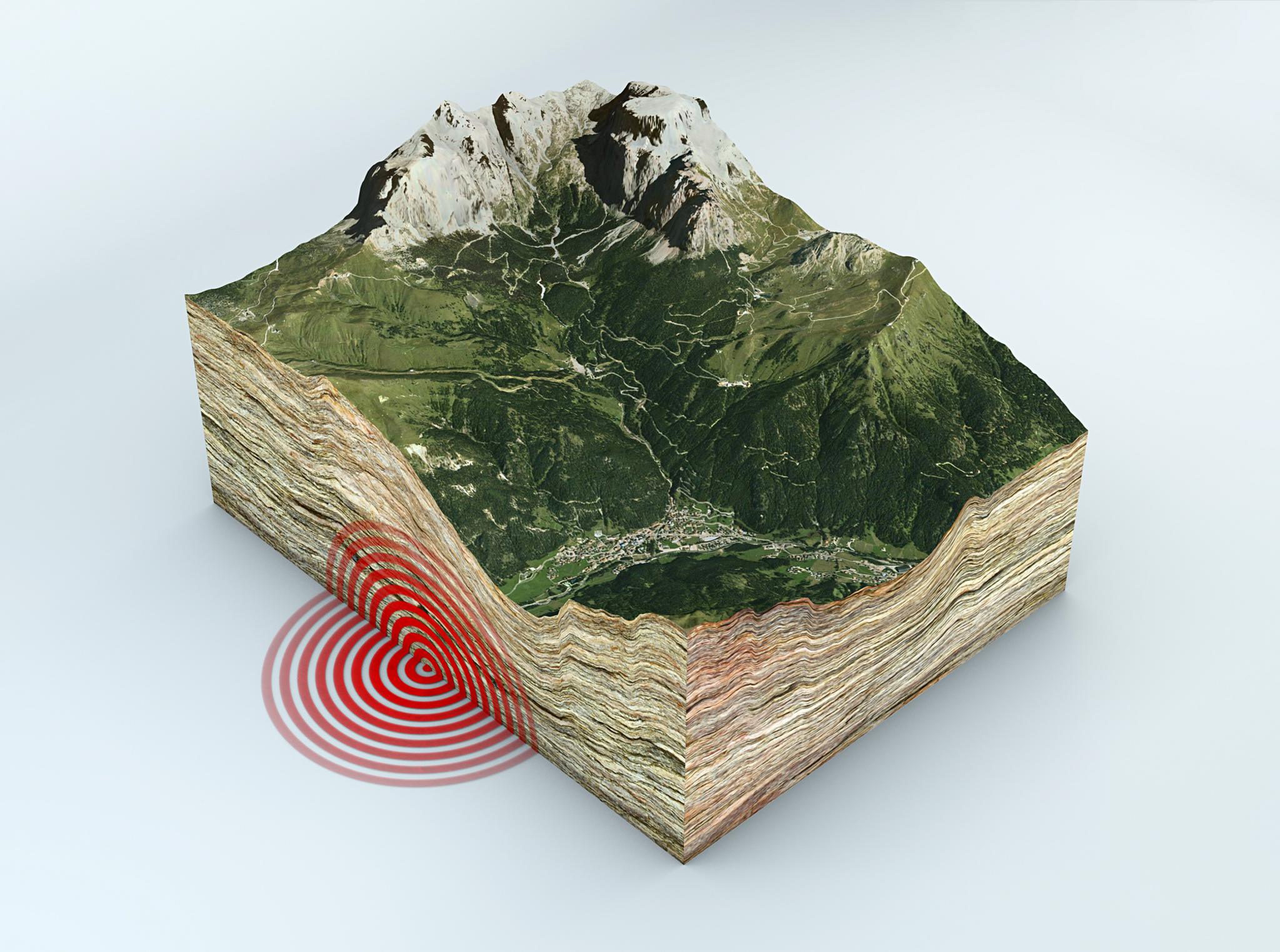Cornwall earthquake: What causes earthquakes in the UK?
- Published

The earthquake's epicentre was in the Mount's Bay area in south Cornwall
An earthquake has been felt in parts of Cornwall this weekend, with people living in the county describing the feeling as an "explosion" or "avalanche".
Seismologists, experts who study earthquakes, recorded the 2.7 magnitude quake at 00:50am in the early hours of Sunday morning.
The earthquake's epicentre, which is where its effects were felt most strongly, was in the Mount's Bay area in south Cornwall.
However, its impact was felt throughout the county, with people woken up by a loud bang from Saint Just in north Cornwall to Redruth in the south west.
"There was a rumbling, like thunder and the house shook for about two or three seconds," said one resident from Mousehole in south Cornwall.
"It felt like an explosion or an avalanche. My glass ornaments were shaking in the window."

The village of Mousehole in south Cornwall was also affected
Experts said the tremor was within what is expected for the area and is among hundreds in the UK every year.
"We have 200 to 300 quakes a year, but about 30 are felt and this was at the lower end of those quakes," said Dr David Hawthorn, who is a seismologist with the British Geological Survey.
"This was quite small by global standards. In the UK we have a phenomenally complicated geology and that's particularly true in Cornwall and sooner or later that stress weakens and we get an earthquake."
2.5 or less: Millions each year. Usually not felt, but some can be recorded by scientists.
2.5 to 5.4: 500,000 per year, Often felt, but only causes minor damage.
5.5 to 6.0: 1000 per year. Can cause slight damage to buildings and other structures.
6.1 to 6.9: 100 per year. May cause a lot of damage in very populated areas.
7.0 to 7.9: 10-15. Major earthquake. Serious damage.
8.0 or greater: Once every year or two. This is a very large earthquake which can totally destroy large areas.
Source: USGHS/Modified Mercalli Intensity
Why do earthquakes happen?
Although the ground we walk on seems solid, the earth is actually made up of huge pieces of flat rock called tectonic plates. These move very slowly, and where they meet is called a fault.
When the plates rub together, the movement forces waves of energy to come to the earth's surface. This causes tremors and shakes - and this is what causes earthquakes.

Scientists can study earthquakes on instruments called seismographs which measure their strength - this is the one for the quake in Cornwall
The strength of earthquakes is measured on a scale of magnitude. The higher the number on the scale, the more powerful the quake. The more powerful a quake is, the more damage it can cause.
But most earthquakes aren't dangerous and often happen without you knowing.
How often do quakes happen in the UK?
Earthquakes: what are they and what causes them? (2018)
There are 200-300 quakes in Britain every year and data suggests that earthquakes of about magnitude 3.5 are likely to occur in the UK around once every year.
The largest recorded earthquake experienced in the UK occurred in 1931 and measured 6.1. The epicentre was Dogger Bank in the North Sea, and so the quake had little impact on the mainland.
What causes the earthquakes in the UK?

Earthquakes can happen far below the Earth's surface
The largest earthquakes in the world occur close to where tectonic plates meet.
The UK lies well away from the world's tectonic hotspots, but these processes still play a role in the tremors we might feel.
Many of the quakes in the UK are clustered around an enormous block of rock known as the Midlands Microcraton. This is an ancient feature (over 590 million years old) that runs up through Birmingham towards the Potteries.
It is composed of harder rocks than those either side of it.
There are a number of active faults that line the Midlands Microcraton, and many of the tremors experienced on the western side of the English Midlands, up to the Pennines, are a result of rocks jostling in this area.
Britain also feels the effects of earthquakes in the North Sea. Here, the crust is much thinner and it is also marked by large numbers of faults.
- Published1 May 2024

- Published6 February 2023

